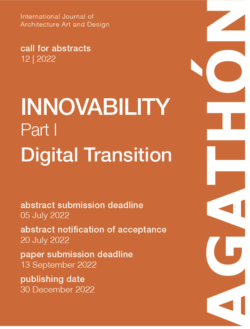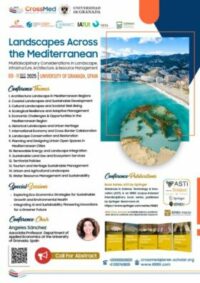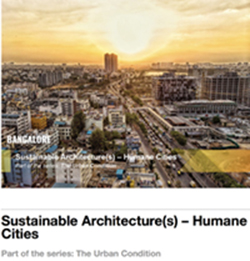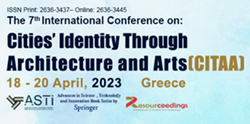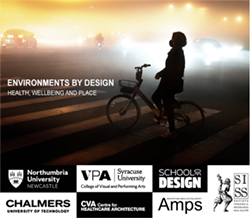ISSN (online): 2076-3298
Call of the Journal:
- Dynamic of Vegetation and Climate Change
- Environmental Implications of COVID-19 Pandemic
- Environmental Sustainability – Life Cycle Assessment – Energy and Environmental Technology
- Groundwater Quality and Groundwater Vulnerability Assessment
- Indoor and Outdoor Air Particulate Matter
- Monitoring and Assessment of Environmental Quality in Coastal Ecosystems
- Monitoring and Management of Inland Waters
- Multiple Approaches for Environmental Assessment of Transitional and Coastal Waters
- Plastic Contamination | Challenges and Solutions
- Response to Current Air Quality Changes in Small and Large Areas
- Restorative Agriculture
- Risk Assessment for Workplace Exposure to Natural Radioactivity
- Rural-Urban Relations and Sustainable Food Systems
- Soil Pollution Assessment and Sustainable Remediation Strategies
Feb
2021
Mar
2021
Has the worldwide rush toward technological and economic developments led to a deterioration of environmental air quality? Anthropogenic air pollution, be it indoors or outdoors, is considered to be the second biggest global environmental threat after climate change. Could the urge for energy efficiency of buildings be partly responsible for the degradation of indoor air quality in terms of ionizing radiation? We know that ppeople are continuously being exposed to natural sources of ionizing radiation. Natural radiation may have numerous sources, including naturally occurring radioactive materials found in all environments. Every day, people inhale and ingest naturally occurring radionuclides from air, food, and water, which sums up 80% of the annual dose of background radiation that a person receives. Background radiation levels can vary widely due to geological differences. Radon, a naturally occurring gas emanating from rocks and soil is classified as the main source of natural radiation. Exposure to ionizing radiation, such as radon, which can occur under different circumstances, at home, at workplaces or in public places is considered existing exposure, and a decision on prevention and control should be taken. If the radiation dose is low and/or is delivered over a long period of time (low dose rate), the risk is substantially lower because there is a greater likelihood of repairing the damage. Although exposure to low doses is associated with low risk, there is still a risk of long-term effects such as cancer; however, that may appear years or even decades later if the low dose is delivered over a long period of time.
Keywords: radon; workplace dose assessment; public health; the use of IoT in exposure control; energy efficiency; temporal variability of indoor pollution; regulations on workplace exposure to radon.
Risk Assessment for Workplace Exposure to Natural Radioactivity
Has the worldwide rush toward technological and economic developments led to a deterioration of environmental air quality? Anthropogenic air pollution, be it indoors or outdoors, is considered to be the second biggest global environmental threat after climate change. Could the urge for energy efficiency of buildings be partly responsible for the degradation of indoor air quality in terms of ionizing radiation? We know that ppeople are continuously being exposed to natural sources of ionizing radiation. Natural radiation may have numerous sources, including naturally occurring radioactive materials found in all environments. Every day, people inhale and ingest naturally occurring radionuclides from air, food, and water, which sums up 80% of the annual dose of background radiation that a person receives. Background radiation levels can vary widely due to geological differences. Radon, a naturally occurring gas emanating from rocks and soil is classified as the main source of natural radiation. Exposure to ionizing radiation, such as radon, which can occur under different circumstances, at home, at workplaces or in public places is considered existing exposure, and a decision on prevention and control should be taken. If the radiation dose is low and/or is delivered over a long period of time (low dose rate), the risk is substantially lower because there is a greater likelihood of repairing the damage. Although exposure to low doses is associated with low risk, there is still a risk of long-term effects such as cancer; however, that may appear years or even decades later if the low dose is delivered over a long period of time.
Keywords: radon; workplace dose assessment; public health; the use of IoT in exposure control; energy efficiency; temporal variability of indoor pollution; regulations on workplace exposure to radon.
AGRICOLA (National Agricultural Library), AGRIS Agricultural Sciences and Technology (FAO), DOAJ, Emerging Sources Citation Index – Web of Science (Clarivate Analytics), Genamics JournalSeek, GeoRef (American Geosciences Institute),Norwegian Register for Scientific Journals, Series and Publishers (NSD), Scopus (Elsevier) Web of Science (Clarivate Analytics), CLOCKSS (Digital Archive), e-Helvetica (Swiss National Library Digital Archive), Academic OneFile (Gale/Cengage Learning), Google Scholar J-Gate (Informatics India), ProQuest Central (ProQuest), Science In Context (Gale/Cengage Learning), WorldCat (OCLC).
Info at: www.mdpi.com/journal/environments/apc
Guest Editor
Dr. Burghele Bety-Denissa



